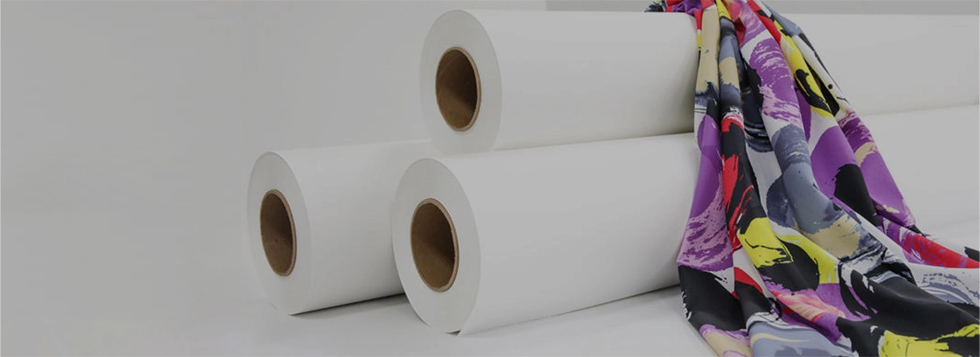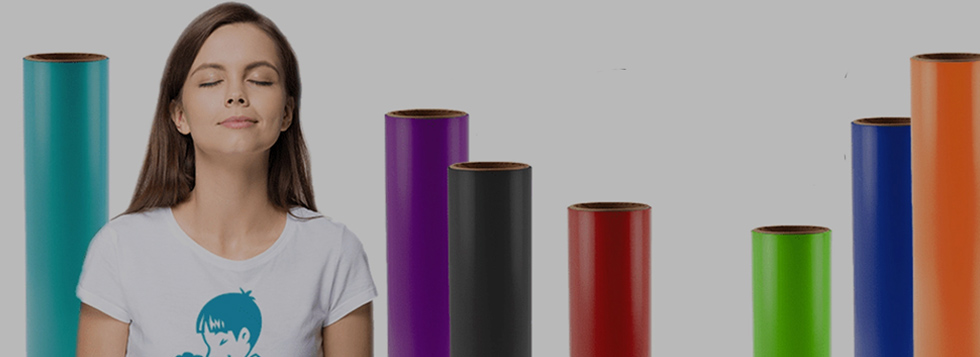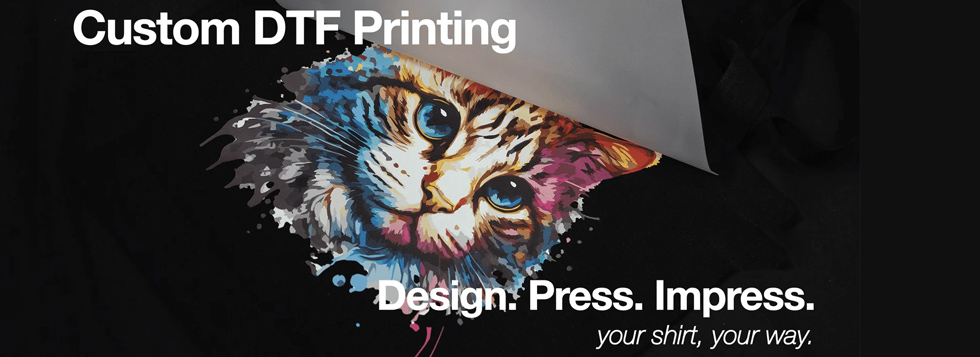When the process of customizing T-shirts, hoodies, hats and other products, it is crucial to choose appropriate heat press machine and transfer consumables. Sublimation paper, heat transfer paper, heat transfer vinyl and direct to film are several common transfer consumables and technologies on the market at present. This article will explain the difference of these four transfer technologies in detail to help you choose an more suitable transfer method better.
1.What is Sublimation Paper?
Sublimation is a special paper used in the heat sublimation transfer technology, where the sublimation ink is vaporized by high temperatures and permeate into the fabric fibers to achieve pattern transfer.

2.Technological Characteristics
Easy & Convenient Operation: the printed sublimation paper is placed on the fabric garments and the transfer is done by heat pressing at high temperature.
Bright in Color: sublimation transfer can achieve rich colors and high-precision patterns.
Applicable Materials: mainly suitable for chemical fiber fabric such as polyester, not suitable for natural fiber such as cotton cloth.
3.Advantage
Strong Durability: The pattern is washable and not easy to fade.
Good Texture: The transfer pattern will not change the feel of the fabric and keeps soft.
4.Disadvantage:
Limited Materials: Only suitable for chemical fiber fabric, not suitable for natural fiber like pure cotton.
High-temperature Requirements: Higher-temperature to heat pressing is required and the consumption is high.
1.What is Heat Transfer Paper?
Heat transfer paper is a transfer paper that is suitable for cotton, polyester and other fabric. It can transfer the patterns to fabric through the heat press.

2.Technological characteristics
Versatility: Suitable for many fabric, such as cotton, polyester and blended fabrics.
Simple & Convenient Operation: the printed heat transfer paper is placed on the fabric garments and the transfer is done by heating and pressing from the heat press.
Color Effect: The color performance is good, but not as bright as sublimation transfer.
3.Advantage
Wide Range of Application: suitable for many materials, especially cotton cloth.
Lower Cost: The cost of transfer paper and machine is low and is suitable for small-scale studio and personal to use.
4.Disadvantage
Poor Durability: Patterns may fade or crack with more frequent washing.
Uncomfortable: The transfer patterns may influence the feel of fabric.
1.What is Heat Transfer Vinyl?
Heat transfer vinyl is a material that can transfer patterns into fabric by cutting and pressing techniques. It usually comes in roll form and is heat pressed after the pattern is cut out by a cutting machine.

2.Technological Characteristics
Flexible Operation: HTV can be but freely, and is suitable for personalized customization
3.Advantage
Strong Durability: the pattern is washable, stand wear and tear.
Good Quality: the transfer pattern has certain third dimension and texture.
Convenient Operation: suitable for small batch customization and personalized demand.
4.Disadvantage
Limited Colors: multiple cuts and transfers are required to achieve multi-color patterns, complicated operation.
High Cost: HTV is costly compared to heat transfer paper.
1.What is DTF?
DTF is a new transfer technique, which can print the patterns on the special film through printer, and then transfer the patterns on the fabric by heat press.

2.Technological Characteristics
High precision: High precision pattern transfer with bright colors can be achieved.
Simple & Convenient Operation: easy process of printing and pressing, and suitable for various fabric.
Versatility: Suitable for a wide range of fabric, such as cotton, polyester, nylon.
3.Advantage
Various Color: Complex multi-color patterns and gradient effects can be achieved.
Strong Durability: The pattern is washable, stand wear and tear.
Wide Range Application: Suitable for many fabrics, flexible operation.
4.Disadvantage
High Equipment Cost: DTF printer is required, and the initial investment is costly.
High Technical Requirement: Operation and maintenance need a certain level of technology.
1.Cost & Investment
Sublimation Paper: Lower initial investment, but is only suitable for chemical fiber fabrics.
Heat Transfer Paper: Lower initial investment, is suitable for many fabrics, and low cost.
HTV: High cost, but strong durability, is suitable for personalized customization.
DTF: Higher initial investment, but has a wide range of application, is suitable for high-precise patterns.
2.Production Efficiency
Sublimation Paper: Which is suitable for medium batch production, easy and convenient to operate.
Heat transfer Paper: Which is suitable for small batch production, fast and easy operation
HTV: Which is suitable for small batch personalized customization, flexible to operate.
DTF: Which is suitable for multi-scale production, easy operation and high efficiency.
3.Pattern Effect
Sublimation Paper: Bright colors, high pattern precision, suitable for chemical fiber fabrics.
Heat Transfer Paper: Good color effect, suitable for various fabrics, but poor durability.
HTV: Strong third-dimension sense of patterns, single color, need to transfer many times to achieve multi-color pattern.
DTF: Various colors, high pattern precision, suitable for many fabrics.
How to choose an appropriate transfer material and technology depends on your production demand, budget and product position. If you need high-precise pattern with bright color, sublimation and DTF are both good choices. If you pursue on versatility and cost effect, heat transfer paper is a ideal choice. But if you need strong durability and personalized customization, heat transfer vinyl is the best choice.
If you need further information on how to select the right transfer material and technology for your needs, please contact our team of specialized consultants who will be happy to provide you with support and assistance.
Sublimation Paper, Heat Transfer Paper, Heat Transfer Vinyl, HTV, Direct to Film, DTF, Heat Press, Heat Press Machine, DTF Printing, Sublimation, Sublimation Printing, HTV Printing, Sublimation vs. Heat Transfer, DTF vs. Sublimation, Ink-jet Heat Transfer, T-shirt Printing, Fabric Printing, Printing Techniques, Heat Press Leader